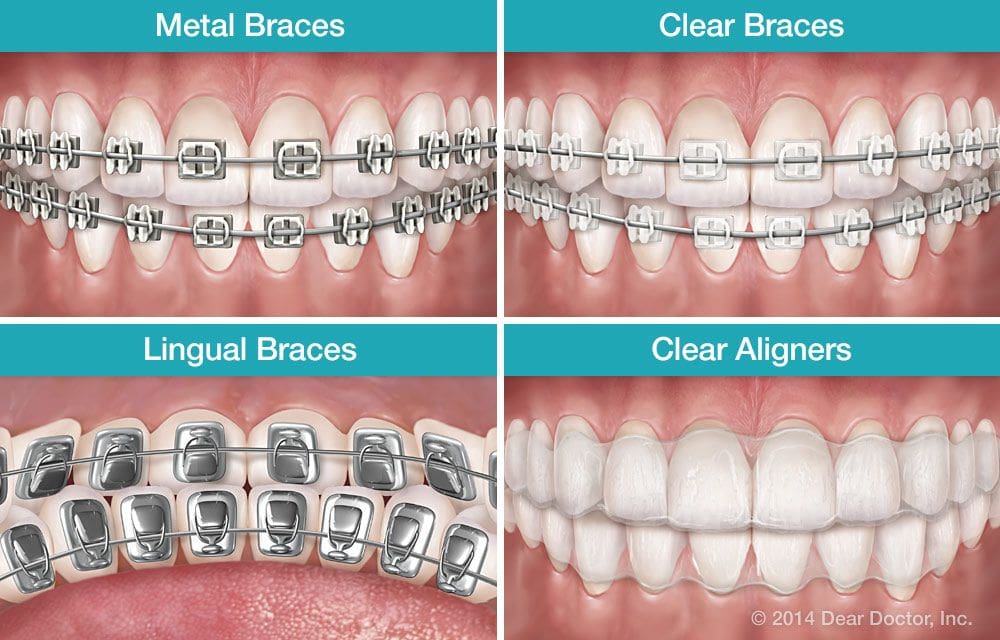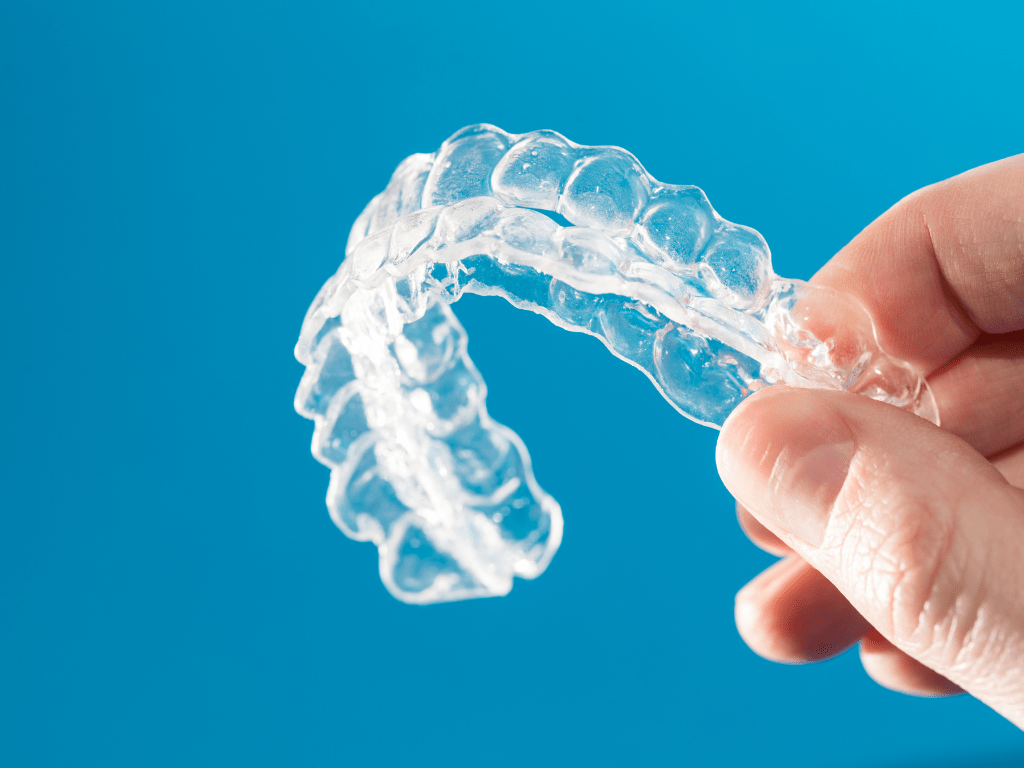Your Quick Guide on Dental Braces (Singapore Edition)
Medical Statistics say that in nearly 50 per cent of people, teeth are irregular, crooked or not aligned. With advances in the field of dentistry, particularly in the branch of orthodontics which deals with correction of irregularities in the teeth and jaws, the treatment of such teeth is not difficult. Straightening of irregular teeth in the past was limited to the use of removable plates with ugly looking steel wires and the treatment was almost always a compromised one and too lengthy and painful. Let’s find out more about dental braces.
Table of Contents
- No Time to Read? Here’s a Snappy Summary of This Article
- Introduction to Dental Braces
- What are the types of dental braces?
- Ceramic Braces
- Invasalign Braces
- Lingual Braces
- Metal Braces
- Tips When Wearing Braces
- Foods to Skip When Wearing Braces
- Conclusion
- FAQ FOR YOUR QUICK GUIDE ON DENTAL BRACES (SINGAPORE EDITION)
- Meanwhile, Check Out Tropika Club’s Ecosystem of Websites
No Time to Read? Here’s a Snappy Summary of This Article
- What are dental braces? Dental braces are devices that help align and straighten teeth and correct various dental issues.
- Why do people need dental braces? People may need dental braces for cosmetic or functional reasons, such as improving their smile, bite, speech, chewing, or oral hygiene.
- What are the types of dental braces? There are different types of dental braces, such as metal, ceramic, lingual, and invisible braces, each with their own advantages and disadvantages.
- How are dental braces installed and maintained? Dental braces are installed by an orthodontist who will examine the teeth, take impressions, and design a treatment plan. The braces are then attached to the teeth and adjusted periodically. Dental braces require proper care and cleaning to prevent plaque buildup and tooth decay.
- How long do dental braces take to work? The duration of dental braces treatment depends on various factors, such as the severity of the problem, the type of braces, the age of the patient, and the compliance with the instructions. The average time is about 18 to 24 months, but some cases may take longer or shorter.
- What are the benefits and risks of dental braces? Dental braces can improve the appearance, function, and health of the teeth and mouth. However, they also have some risks, such as discomfort, pain, infection, tooth damage, or relapse.
Introduction to Dental Braces
Modern techniques are simple and painless and the treatment can be carried out in individuals of all age groups starting right form the age of three to four years and as late as 30-40 years, though the earlier the treatment is carried out, the better it is.

What are the types of dental braces?
These days, there are a number of choices available regarding the type of braces to be chosen. These are different techniques and braces available nowadays, including the new tooth colored invisible braces and visible metal braces. Newer types of braces are further divided into:
- Ceramic braces
- Invasalign braces
- Lingual braces
- Metal braces

Ceramic Braces
Ceramic Braces: Ceramic braces are made of tooth colored composite materials. They are strong and generally don’t stain. Adults like to choose ceramic because they ‘blend in and match’ with the natural teeth and are less noticeable to outsiders than metal braces. These are the type of braces Tom Curise had. The advantages are that they are virtually invisible, more comfortable and irritate gums less than the metal braces, but are more expensive and may require some extra sittings.
Invasalign Braces
Invasalign Braces: With the advent of the Invisalign technology, straightening teeth has become quite convenient and more comfortable. This orthodontic treatment corrects bad bites and crooked teeth using a series of removable, “invisible” aligners, which are replaced about every two weeks. Great for people who do not have severe problems. The braces consist of strong plastic trays that are fabricated especially on individual basis. They are indeed invisible. One can get the teeth straightened without anyone seeing that one is wearing braces. Trays for treatment are computer fabricated by align technologies. They are absolutely invisible to the outsiders. The Invisalign system isn’t necessarily a more effective treatment than braces and it is not recommended for more complex type orthodontic cases. However, for most adults and many adolescents who want to straighten their teeth without the stigma of metal braces, Invisalign is a great alternative.
Lingual Braces
Lingual Braces: These are placed behind the teeth rather than the usual front portion of the teeth and are virtually invisible to others. Only few specially trained professional orthodontists carry out treatment with lingual braces. Lingual braces have the same components as conventional braces, but they’re fixed to the back of your teeth, on the tongue — or lingual — side of the teeth. Because they’re behind your teeth, they’re nearly invisible. A 2016 review of the research showed that lingual braces achieved the treatment goals patients and doctors had planned. But lingual braces aren’t right for everyone. Patients with very deep overbites, for example, might run into some trouble with brackets popping off more frequently.
Metal Braces
Metal Braces: Used for traditional orthodontics treatment. These are very strong and can withstand most types of treatment. At first, they may irritate the gums, but after a few weeks, get settled. Though less expensive, these are more noticeable than other types. Metal braces tend to move your teeth slightly faster than ceramic, through ceramic braces are faster than Invisalign. Generally speaking, metal braces are less expensive than ceramic. The average amount of time for braces is between 1 and 3 years. But you may need them for a shorter or longer amount of time depending on your circumstances.
Tips When Wearing Braces
Keeping your braces clean protects your teeth from plaque build-up and enamel deterioration. Learning these tips for wearing braces and how to care for your braces is paramount for success during treatment. The following tips can help you with your daily oral hygiene with braces. And now few tips you should follow to get best out of whichever treatment you choose to take up:
- Avoid fizzy drinks
- Chew your food
- Don’t take drugs
- Quit smoking
- Stay away from Bleaching
- Stop Biting nails
Foods to Skip When Wearing Braces
- Ice: Don’t chew on ice, as ice can break your brackets! You can suck on ice all you want, but no chewing.
- Caramel, taffy, and gummy bears: This candy is too sticky and gooey and it can take your brackets or wires right off. Avoid all candy that has this consistency.
- Hard chips: Avoid hard chips and taco shells–they will break your brackets.
- Hard pretzels: These also break brackets
- Raw veggies and fruits, such as hard carrots and apples: These can break off brackets and get stuck in your teeth very easily.
- Hard candies: The tendency for most is to chew on the hard candies. Just avoid them altogether.
- Nuts, seeds, popcorn: These foods are hard and can break brackets and wires, just like most things on this list. Be very careful if you do eat them, but it’s safer to avoid them altogether.
- Corn on the cob: The very first bite will lodge a bunch of corn into your brackets. It’s best to cut the corn off first and then enjoy. Cut most fruits, vegetables, and meats into bite-size pieces to avoid food getting stuck in your braces. You will be thankful you did!
- Beef jerky: This seems to be a bracket breaker as well, so beware! Stick to softer meats during your time with braces, and if you must eat beef jerky, cut it into bite-site pieces.
- Soda: Usually soda is full of sugar and damages the health and look of your teeth. It can stain your teeth over time and deteriorate your teeth as bacteria is attracted to sugar and plaque buildup. If you do drink soda, make sure to brush your teeth right after.
- Sugary treats: Sugary snacks all the time will not do you any favors with braces. Just like soda, bacteria loves sugar and too much too often will deteriorate your teeth. Make sure to limit or minimize your sugar intake and brush your teeth after eating sugary foods. Your teeth will thank you.
Conclusion
If you’re thinking of getting dental braces, you might have a lot of questions and concerns. How do they work? How much do they cost? How long do you have to wear them? Are they painful? Don’t worry, we’ve got you covered. In this article, we’ve given you a quick guide on everything you need to know about dental braces in Singapore.
Dental braces are devices that help fix your teeth and make them look better. They can also improve your bite, speech, chewing, and oral hygiene. There are different types of braces to choose from, depending on your needs, preferences, and budget. Some are more visible, while others are more discreet. Some are more comfortable, while others are more effective. You’ll need to consult an orthodontist who will examine your teeth and recommend the best option for you.
Getting dental braces is not a one-time thing. You’ll have to visit your orthodontist regularly to get your braces adjusted and checked. You’ll also have to take good care of your braces and your teeth by brushing, flossing, and avoiding hard or sticky foods. You’ll have to wear your braces for an average of 18 to 24 months, but it could be longer or shorter depending on your case.
Dental braces can have many benefits for your smile and your health. They can make your teeth look straighter, more even, and more attractive. They can also prevent or treat problems like overbite, underbite, crossbite, or gaps. They can make it easier for you to speak clearly, chew properly, and keep your teeth clean. However, dental braces also have some risks and drawbacks. They can cause discomfort, pain, infection, tooth damage, or relapse if not done or maintained properly.
Dental braces are not cheap in Singapore. The cost can vary depending on the type of braces, the complexity of the case, the duration of the treatment, and the clinic you choose. You can expect to pay anywhere from $3,000 to $10,000 for dental braces in Singapore. Some clinics may offer instalment plans or subsidies to help you with the payment.
Dental braces are a big decision that can affect your life in many ways. That’s why you should do your research and find out as much as you can before you commit to it. You should also look for a reputable and experienced orthodontist who can guide you through the process and give you the best results possible.
We hope this article has helped you understand more about dental braces in Singapore. If you have any questions or comments, feel free to leave them below. And if you’re looking for the best deals on dental braces in Singapore, check out Tropika Club Magazine’s website where we feature the top-rated clinics and salons in Singapore. You can also book your appointment online and enjoy discounts and rewards. Tropika Club Magazine is your one-stop destination for all your beauty and wellness needs. Visit us today and discover the best services and products in Singapore!

FAQ FOR YOUR QUICK GUIDE ON DENTAL BRACES (SINGAPORE EDITION)
Q: How do I know if I need braces?
A: You may need braces if you have any of the following dental problems:
- Crooked, crowded, or overlapping teeth
- Gaps or spaces between your teeth
- Overbite, underbite, crossbite, or open bite
- Difficulty in chewing, speaking, or cleaning your teeth
The best way to find out if you need braces is to consult an orthodontist who can examine your teeth and recommend the best treatment option for you.
Q: How much do braces cost in Singapore?
A: The cost of braces in Singapore depends on several factors, such as:
- The type of braces you choose (metal, ceramic, lingual, or invisible)
- The complexity of your case and the duration of your treatment
- The clinic and the orthodontist you go to
According to Tropika Club Magazine, the average cost of braces in Singapore ranges from $3,000 to $10,000. Some clinics may offer instalment plans or subsidies to help you with the payment.
Q: What are the benefits and risks of braces?
A: Braces can have many benefits for your smile and your health. They can:
- Improve the appearance, function, and alignment of your teeth
- Prevent or treat dental problems such as tooth decay, gum disease, or jaw pain
- Boost your confidence and self-esteem
However, braces also have some risks and drawbacks. They can:
- Cause discomfort, pain, infection, tooth damage, or relapse if not done or maintained properly
- Require regular visits to the orthodontist for adjustments and check-ups
- Affect your eating, speaking, and oral hygiene habits
Q: How long do I have to wear braces?
A: The length of your braces treatment depends on various factors, such as:
- The severity of your dental problem and the amount of movement required
- The type of braces you choose and how well they work
- Your age and the growth rate of your teeth and jaws
- Your compliance with the instructions and care of your braces
The average time for braces treatment is about 18 to 24 months, but some cases may take longer or shorter. After your braces are removed, you will need to wear retainers to keep your teeth in their new position.
Q: How do I take care of my braces and teeth?
A: Taking care of your braces and teeth is very important to ensure a successful and healthy treatment. You should:
- Brush your teeth at least twice a day with a soft-bristled toothbrush and fluoride toothpaste
- Floss your teeth daily with a floss threader or a water flosser
- Rinse your mouth with water or mouthwash after every meal or snack
- Avoid hard, sticky, or sugary foods that can damage your braces or cause cavities
- Visit your orthodontist regularly for adjustments and cleaning
- Follow the instructions and advice given by your orthodontist
Meanwhile, Check Out Tropika Club’s Ecosystem of Websites

Tropika Club Magazine – Tropika Club Magazine is a Singapore-based publication that features articles on a wide range of topics with a focus on local businesses and content for the region. The magazine emphasizes supporting local businesses through its #SupportLocal initiative, which includes coverage of everything from neighborhood hawker stalls to aesthetic clinics in town. In addition to highlighting local businesses, Tropika Club Magazine also covers a variety of local content, including beauty, lifestyle, places, eats, and what’s on in Singapore and the Asia Pacific region.
Tropika Club Deals – Tropika Club Deals is a leading online deals and voucher shopping site in Singapore, offering amazing discounts on beauty, wellness, and fitness products and services. It’s the perfect platform for customers who want to discover the best deals without having to commit to a specific appointment date and time. These deals are available at major beauty stores, facial salons, hair salons, and other brands in Singapore, with no minimum spend required. Choose from guaranteed discounted deals in the categories of hairstyling, hair removal, facial & aesthetics, body slimming, brows & lashes, nails & makeup, massage & spa or fitness & wellness. Tropika Club Deals is also ideal for customers who want to buy vouchers as gifts or to use for the future. So whether you’re looking to save money on your next haircut or want to treat yourself to a relaxing massage, Tropika Club Deals has got you covered with the best voucher and coupon deals in Singapore!




